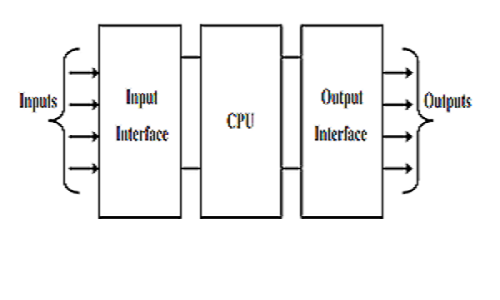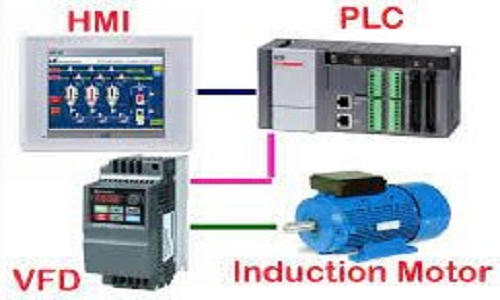Control systems and information technology
Automation is the use of machines, control systems, and information technologies to optimize productivity in the manufacturing processes with little human involvement.
Industrial automation helps us to process the plant operation in more optimized conditions by using various control systems such as Programmable Logic Circuit (PLC), Human-machine Interface (HMIs), and robotics.
HMIs act like monitors or phone screens that we can get information feedback from the system and display it graphically and even and parts and hardware connections and necessary configurations in the whole department. We can change it very easily with the touch screen or keyboard.
The display screen of ATM devices is one of the examples that can be used for HMI.
Automation employs logic and programming to provide information to machines on how to accomplish a function; these machines provide great control, which enhances manufacturing performance.
In a manufacturing environment, industrial automation may consist of various types of equipment. In industrial automation control, multiple process variables such as temperature, flow, pressure, distance, and liquid levels can be recorded at the same time. All these variables are recorded, processed, and controlled by complex microprocessor systems or PC-based data processing controllers.
Programmable Automation:
The production equipment in this method is built to be able to modify the operation sequence to meet different product configurations.
It is mainly used when manufacturing products in batches because we can customize and make adequate changes throughout the manufacturing process.
A program of instruction always controls the manufacturing process in programmable automation. In this case, we can just load the program into the hardware system and begin producing new products at any moment.
Advantages of Programmable Automation :
- Very flexible
- Able to deal with design variations
- Appropriate for batch production

Disadvantages of Programmable Automation:
- High investment.
- Production rate is low than fixed automation.
Main Components of Industrial Automation :
- PLC – Programmable Logic Controller
- DCS- Distributed control system
- SCADA
- Advance Solutions
- Cyber Security
- OT
Many early PLCs were not capable of graphical representation of the logic, and so it was instead represented as a series of logical expressions in a 0,1 format (akin to Boolean algebra).
PLC :
A PROGRAMMABLE LOGIC CONTROLLER (PLC) is an industrial control system that continuously analyses the status of input devices and makes choices to control system the state of output devices based on a custom program. To automate a process or machine, a PLC monitors inputs, makes choices based on its program, and controls outputs.
PLC has composed of three main parts:
- Input
- CPU
- Output

Plcs are very similar to computers and smartphones, each of which is an input part, which in mobile phones can be a touch screen, buttons, external memory, etc., or in a computer it can be a keyboard and an example. . Mouse
In plcs, the input can be data sent from servo drives, thermal sensors, weight sensors, etc.
The other part is the computing unit, which is the main brain of all these devices. Logical instructions to perform the desired action are written on the memory of these devices.
The last part is called the output, which displays and implements the product of the inputs and the calculations performed on them. In phones, the simplest output is the screen, and in PLCs, HMI can be used to display information and arms. It was considered as an output to act on the commands of the servo drives , VFDs and…
VFD (variable frequency drive) is a type of variable frequency drive that changes the rotational speed of the motors connected to it.
The difference between a mobile phone or a computer versus a plc, different memory sizes, differences in device communication methods, operating systems, and the processing speed of each CPU can be mentioned as the most important and general differences between devices.
